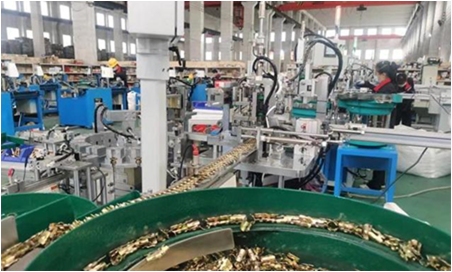Zář . 21, 2024 23:48 Back to list
types of clamps and their uses
Types of Clamps and Their Uses
Clamps are essential tools in various industries, from woodworking to metalworking, and even in everyday household tasks. Their primary function is to hold objects securely in place, allowing for precision and safety during projects. There are several types of clamps, each designed for specific uses.
1. C-Clamps These are among the most common types of clamps, characterized by their C-shaped frame. C-clamps are used to hold workpieces together, especially in woodworking projects. They provide a firm grip and can be adjusted for different sizes, making them versatile for various applications.
2. Bar Clamps Also known as pipe clamps, bar clamps consist of a long bar with adjustable ends that can expand or contract. They are ideal for gluing large surface areas, such as in cabinet making. Their design allows for even distribution of pressure, making them excellent for securing joints.
3. Spring Clamps These clamps feature a spring mechanism that provides a quick and easy way to hold materials together. They are often used in crafts and light-duty tasks, catering to tasks that require frequent adjustments. The lightweight nature and strong grip make them suitable for various applications.
types of clamps and their uses

4. Parallel Clamps Known for their exceptional even pressure distribution, parallel clamps have jaws that remain parallel to each other while clamping. This feature is particularly useful when gluing large panels or when precision is necessary, such as in furniture making.
5. Toggle Clamps These are versatile locking clamps often used in manufacturing settings, where repeated clamping and unclamping is needed. Toggle clamps allow for rapid action, making them ideal for jigs and fixtures.
6. Woodworking Clamps Specific types of clamps, such as pipe clamps or corner clamps, are designed specifically for woodworking tasks. Corner clamps help create right angles, which is crucial for frames and boxes.
7. Magnetic Clamps These are particularly useful in metalworking and fabrication, providing a way to hold metal pieces together without damage. They are valuable in welding applications, where keeping pieces aligned is critical.
In conclusion, clamps are indispensable tools that come in various forms to meet the demands of different tasks. Understanding the types of clamps and their specific applications can lead to better project outcomes, enhanced safety, and improved efficiency in the workspace. Whether in a professional setting or at home, utilizing the right clamp can make a significant difference in the quality of work produced.


